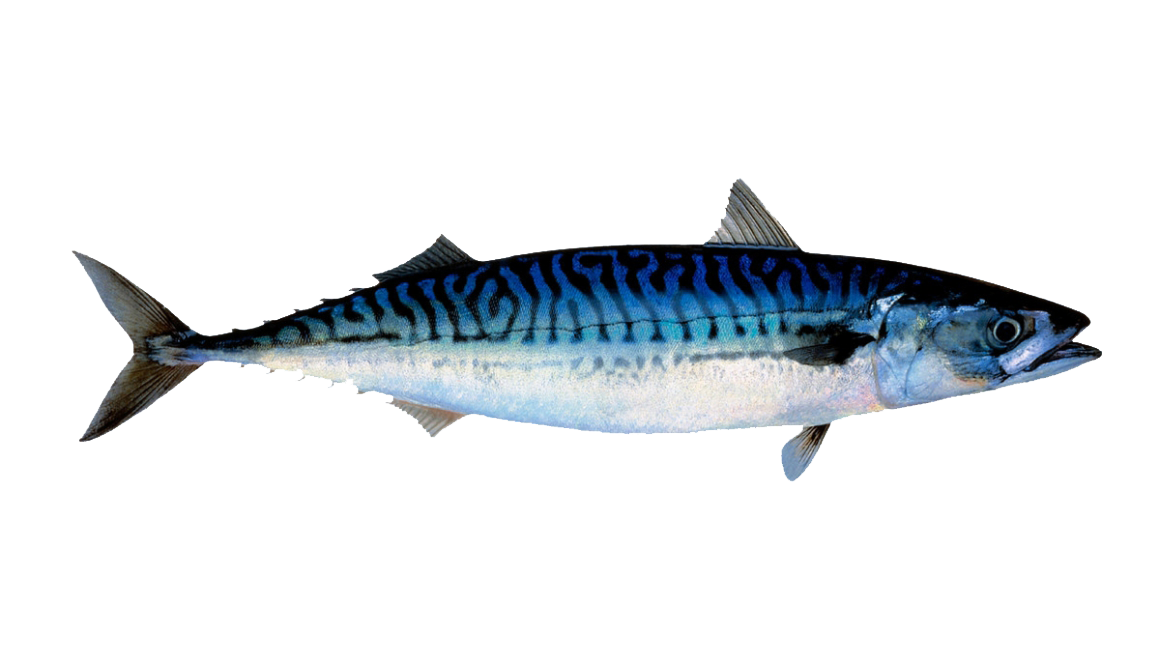Why Premium Omega-3 Oils Come From Cold Seas
The finest omega-3 concentrates are typically sourced from cold-water fish—think anchovies, sardines, and mackerel. In Arctic regions, winds and currents push surface waters offshore, triggering upwelling that pulls nutrient-dense deep water to the surface. This nutrient surge supercharges the food web, producing small oily fish that naturally pack EPA + DHA.
Norwegian Mackerel: A Flavorful, Omega-3–Rich Catch
Norwegian mackerel is celebrated worldwide for its lively texture and juicy, richly flavored flesh—and it’s a standout source of omega-3s. The densest mackerel concentrations occur southeast of the Shetland Islands, across the Norwegian Sea, and throughout the North Sea (including Skagerrak).
Size Snapshot
-
Maximum length: ~65 cm
-
Maximum weight: ~3.5 kg
Mackerel Nutrition (Per 100 g, raw; May–June, edible portion)
-
Energy: 516 kJ (123 kcal)
-
Protein: 18.6 g
-
Total fat: 5.4 g
-
Saturated fat: 1.2 g
-
Trans fat: 0 g
-
Monounsaturated fat: 2.2 g
-
Polyunsaturated fat: 1.3 g
-
Quick take: Lean protein with meaningful omega-3 polyunsaturates—perfect for heart-smart meals.
Where Mackerel Live (and Why It Matters)
Mackerel are fast, pelagic fish (they roam the open water column rather than the seafloor). Their range spans the northeast Atlantic—from northwest Africa up to the Barents Sea, and westward from the Norwegian Sea to Iceland and Jan Mayen. They thrive in relatively warm waters above 6 °C, migrating to track temperature and food.
Stock Structure & Spawning: The Northeast Atlantic Mackerel
In European waters, mackerel are managed as a single stock—the northeast Atlantic mackerel—with three main spawning groups:
North Sea Mackerel
-
Spawning grounds: North Sea & Skagerrak
-
Season: May–July
Western Mackerel
-
Spawning grounds: West of Ireland & the British Isles
-
Season: March–July
Southern Mackerel
-
Spawning grounds: Off Spain & Portugal
-
Season: February–May
Spawning happens in the upper ocean layers. The larvae grow quickly, reaching ~20 cm within a few months.
How Scientists Gauge the Stock
Researchers estimate the spawning stock biomass via annual egg production surveys conducted across February–July. They also measure egg output per female, building a season-wide picture of reproductive strength and year-class success.
Key Takeaways for Shoppers & Cooks
-
Cold-water origins explain mackerel’s robust EPA + DHA content.
-
Norwegian mackerel offers standout flavor and texture alongside its omega-3s.
-
Nutritionally, it’s a lean, high-protein fish with beneficial polyunsaturates and zero trans fat.
Quick FAQs
Is mackerel a good omega-3 source?
Yes—like anchovies and sardines, mackerel is naturally rich in marine omega-3s (EPA & DHA).
Where does northeast Atlantic mackerel spawn?
Across three zones: North Sea/Skagerrak (May–July), west of Ireland & the British Isles (March–July), and off Spain/Portugal (February–May).
How many calories are in mackerel?
About 123 kcal per 100 g (raw) in the May–June period described above.




